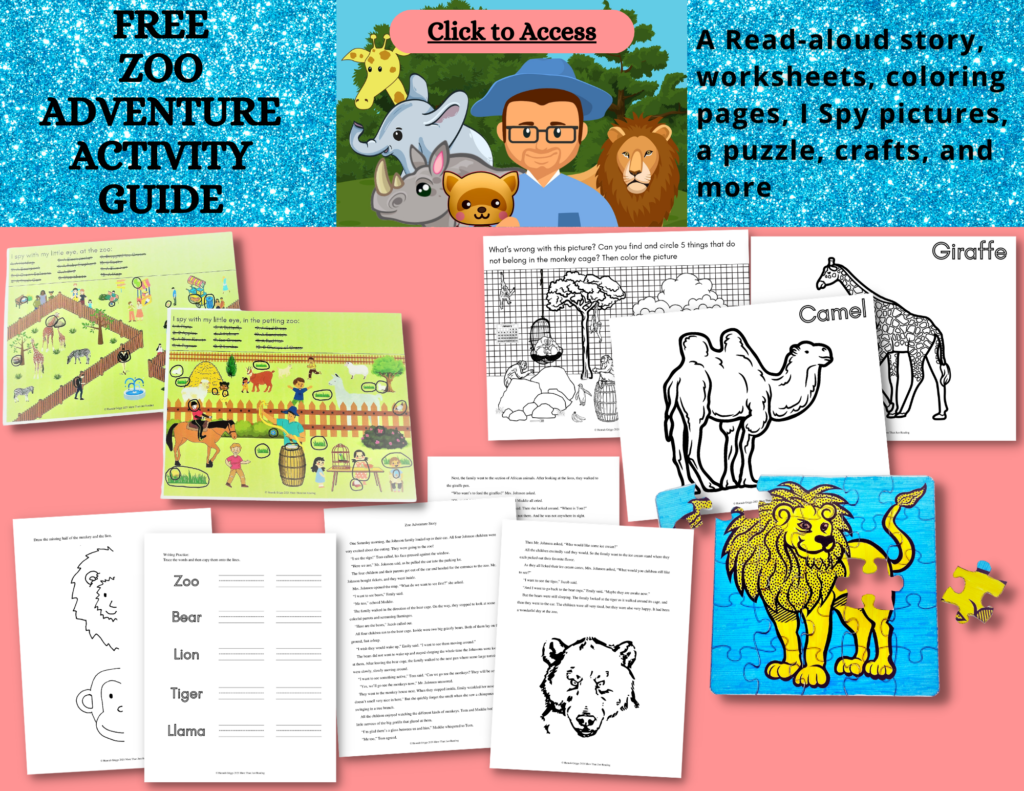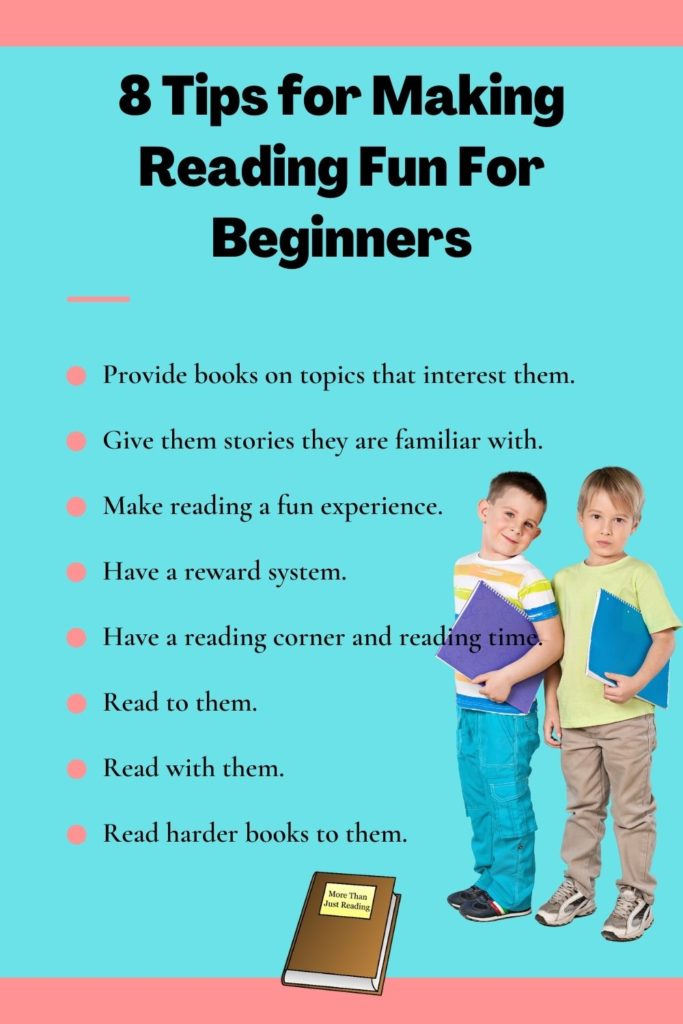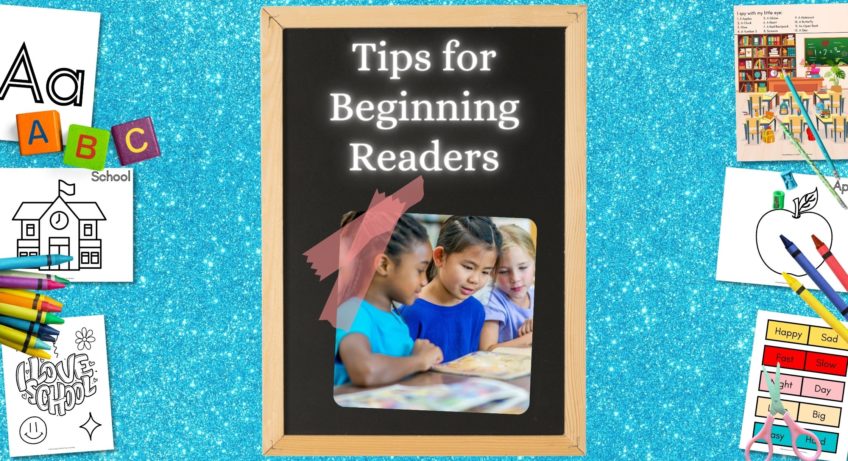Beginning readers are not always eager to read. It’s something that can still be difficult for them, something that feels more like schoolwork than a fun activity. And you as a teacher may be in need of creative ideas for helping them learn to enjoy reading. If so, stay tuned; I’ve got some tips for helping beginning readers enjoy reading.
For students of this age, it’s important to help them see that reading is fun because if they learn to enjoy it now, their love of reading will be a tremendous blessing to them now as well as later on down the road.
So how do we as teachers make reading fun for beginning readers? Here are 8 tips for helping beginning readers to improve their reading skills.
Tips for Beginning Readers
Don’t have time to read the whole blogpost? Just click the sections below that interest you to jump directly to that part of the post.
- Provide books on topics they are interested in
- Give them stories they are already familiar with
- Make reading time a fun experience
- Have a reward system
- Have a reading time and a reading corner
- Read to them
- Read with them
- Read harder books to them, to inspire them

1. Provide books on topics they are interested in
Does your student like airplanes? Find some fun stories about airplanes for them to read. Or stories about puppies if they like puppies. When a student is interested in the book topic, they will make more of an effort to read it for themselves. And getting a child interested in reading will help their reading skills improve.
2. Give them stories they are already familiar with.
What’s one of your student’s favorite stories? Not the one they have memorized from hearing it over and over, but another one they enjoy and are pretty familiar with. Have them try reading that story. If they are familiar with what happens in the story, they will have an easier time picking out words and figuring out what it says.
3. Make reading time a fun experience.
What are some ways to make reading time an extra fun time? By combining some special treat or activity with reading, it shows the students that reading is fun, and it will get them excited for reading.
4. Have a reward system.
An English student I taught once told me about the reward system her dad had set up to get her to read. If she read a certain number of hours, at the end, she would get a pet guinea pig.
Encourage reading by having some sort of reward when the student has read a certain number of books or pages or for a certain amount of time. It doesn’t have to be as long-term as a new pet, but it can still be something fun like a trip to the park or a special treat like their favorite candy or ice cream.
5. Have a reading time & reading corner.
Kids at the age where they are beginning to read need structure. Having a set reading time and place will give structure to reading. Make the reading corner fun and inviting. Stock it with books the children enjoy, and stay on schedule with reading time as much as possible. Having this routine will get the students used to reading.
6. Read to them.
I’ve never met a kid that didn’t like hearing a story read aloud. Even the most difficult kid in my class the semester that I taught in an actual classroom setting instead of teaching online enjoyed hearing me or the other teacher read aloud.
So read aloud to beginning readers. This shows them what kind of fun and exciting stories are available and may just encourage them to try reading more books on their own.
There’s a fun read-aloud story I wrote about a family’s trip to the zoo in the printable Zoo Adventure Activity Guide, that is available for free and instantly accessible. What 1st grader doesn’t love a story about a trip to the zoo?

7. Read with them.
This tip probably isn’t applicable for a classroom teacher, but it would work for a home-school mom or a parent wanting to help their child develop a love for reading.
When your children see you reading, it shows them that reading is important, not just something connected with school. So how about having a time where you and your children read together with each person having their own book to read to themselves.
I think something like this could create fond memories that children will look back on when they are older. And it might help your beginning readers to take off and excel in their reading.
8. Read harder books to them, to inspire them.
A child’s reading level and story comprehension level are not always the same. A child who is struggling with reading may have to read stories that are really too simple for them, content wise. This can cause frustration and a dislike for reading. So what can we do about this?
I already mentioned reading books aloud. Choose books that are at the child’s comprehension level, stories about kids their own age, not stories they would consider “for babies.” Read the selected stories aloud to the child, and show them what wonderful stories await them as they get better at reading.

Conclusion:
I hope these tips are helpful for you and can be used to make more kids who are excited about reading!
But maybe your students already know how to read well, but they just don’t like it. Check out this post with 21 ways to help students learn to enjoy reading.
What are some strategies you have used to help your students learn to enjoy reading? Go ahead and share them in the comments below. I’d love to hear what you have found to be helpful!

